#Pioneers of Science
Explore tagged Tumblr posts
Text
#Famous Scientists#Historical Discoveries#Contributions to Science#Science Series#Educational Content#Science Heroes#STEM Inspiration#Science Biography#Influential Scientists#Science and Education#Short Science Videos#Science Legends#Scientific Innovations#Pioneers of Science#Science Explained#Great Discoveries#Science and History#Inspiring Scientists
0 notes
Text

The Pioneer - art by Al Feldstein (1954)
#al feldstein#ec comics#weird science-fantasy#comic art#50s sci-fi art#retro futurism#the pioneer#1950s#1954
149 notes
·
View notes
Text

is this anything
#17776#< not really but I’m not sure there’s actual people in the science tags#unrelated but i personally don’t like humanized versions of the satellites#partly bc I feel like the whole point is that they’re machines and partly bc#I associate them with my friend group with members that talk exactly like the satellites in 17776#eh fuck it#science#pioneer 10#astronomy#i guess. I GUESS
370 notes
·
View notes
Note
brocedes stepford wife type marriage. could be het, or not
i love your fics btw!
Not really stepford wives but robot nico???
"I've updated his language model and increased his audio processing speed," says Lewis, gesturing at the cracked-open shell of electronics on the table. It doesn't really look like Nico now, but as soon as his circuits get stuffed back inside where they're supposed to be and his titanium ribs are snapped shut, he'll look just like the boy Lewis followed to MIT when he was eighteen years old. He's not nearly as smart, or as funny, or as insufferable, but he seems to charm his customers just the same.
"And what is your progress on removing the accent?" says Toto. "I understand modelling a convincing human voice can be difficult but--"
"Zero percent progress," says Lewis. "I'm not doing it, just like I'm not designing a fucking companionship mode, because he is a state of the art robotic assistant, and not a robot girlfriend."
"At the going price," says Toto, arms crossed, "you could double your revenue by adding a companionship mode."
"He can affect politeness. That's the best I'll do."
Toto throws his hands in the air. "Frankly, I don't understand your hang-ups about AI companionship. It's the done thing now, and your models are the best on the market. You could change the game, if you weren't so--"
"I said no," says Lewis.
Toto lifts an eyebrow. "I suppose your gifts are reserved just for you? Your prototype--" He points in the direction of other robot-Nico, the prototype Lewis is always tinkering with, sitting placidly on a rather avant-garde armchair in the corner of the lab. "--behaves awfully affectionately, don't you think?"
Lewis frowns, assessing proto-Nico's idle seat. The cycle of his breath is so natural Lewis could almost be fooled into thinking he was real, if he didn't feel the swell of pride in his chest at the fact that he made proto-Nico, made him almost as good as the real thing. "He's experimental. Not--not ready for the market."
Toto crosses his arms, assessing. "I'm sure."
#i must credit misa blorbocedes who pioneered a much better nico is a top of the line purchaseable robot au in the dms... my queen#save me brocedes asks save me#the backstory here is that while at mit nico embarked on a project to preserve human memories/personalities etc. and then abandoned lewis#when he met his wife and moved to some future earth colony for wealthy people and completely gave up the sciences#but he had left his BRAIN downloaded in some organic circuitry... lewis took it and combined it with his ability to build robots to create#a nico bot that he sold to big robot investor toto wolff as an assistant... but clients only get a dumbed-down version. The real original#copy of nico exactly as he was when he downloaded his brain is lewis's personal assistant and lives in his house and provides him with#companionship and sometimes lewis has to open him up to remind himself that it isn't really nico#and to be clear lewis does not have sex with robot nico because he feels guilty even though robot nico reminds him that he still retains al#of nico's original thought processes so it wouldn't be coercive#ANYWAY#i wrote this#brocedes
29 notes
·
View notes
Text
Famous/Important Women?
I'm trying to make a list of notable women in history (mostly for fun, partially to use against misogynists who think men did everything), and kinda not wanting to just look up a list online.
So; I'd like anyone who sees this post to add to the list. Even if all you can remember is a name and basic details, that's enough (I myself am mostly operating off memory, and then looking up details to fill in the blanks). If possible though, a date of birth/death and what they're most known for would be great, since those are the details I'm focusing on right now.
I'll add all new people/details to a list here on Tumblr so we're all on the same page info-wise.
Edit; pinning this post both so I don't have to scroll millions of miles and so it's easier for people to find (I should probably be pinning my intro post instead but whatever).
List so far:
Enheduanna (𒂗𒃶𒌌𒀭𒈾), Birthdate unknown (c. 23rd century BCE), death date unknown (c. 23rd century BCE). High Priestess of Nanna/Sin (Sumerian Moon God), Daughter of Sargon (Founder of the Akkadian Empire), Earliest Known Named Author in History.
Nitocris (Greek: Νίτωκρις). Birthdate Unknown (c. 22nd century BCE), death date unknown (c. 22nd century BCE). Possible Queen of Egypt; If So, Would Have Been the Last Queen of the Sixth Dynasty of the Old Kingdom (c.2686 – 2181 BC).
Sobekneferu (Neferusobek). Birthdate unknown (mid 18th century BC), death date unknown (mid 18th century BC). Queen of Egypt, the Last Ruler of the Twelfth Dynasty of the Middle Kingdom, Reign Lasted 3 Years, 10 Months, and 24 days, Ending in c. 1802 BC.
Hatshepsut. Born ~1507 BC, died 1458 BC. Queen of Egypt (c. 1479 – 1458 BC), Fifth Pharaoh of the 18th Dynasty of Egypt, Prolific Builder, Reigned in Peace and Prosperity.
Sappho (Modern Greek: Σαπφώ (Sapphṓ), Aeolic Greek: Ψάπφω (Psápphō)). Born c. 630 BC, died c. 570 BC. Ancient Greek Poetess, Famous for Love Poems, Symbol of Lesbian Love, Known as “The Tenth Muse”.
Timarete (Thamyris, Tamaris, Thamar (Greek: Τιμαρέτη)). Birthdate unknown (c. 5th century BC), death date unknown (c. 5th century BC). Ancient Greek Painter; According to Pliny the Elder, She "Scorned the Duties of Women and Practiced Her Father's Art." At the Time of Archelaus I of Macedon She Was Best Known for a Panel Painting of the Goddess Diana That Was Kept at the City of Ephesus.
Helena of Egypt. Birthdate unknown (4th century BC), death date unknown (c. 4th century BC). Painter, Learned From Her Father, Worked in the Period After the Death of Alexander the Great in 323 BC, Painted a Scene of Alexander Defeating the Persian Ruler, Darius III, at the Battle of Issus.
Kalypso. Birthdate unknown (c. 3rd century BC), death date unknown. Supposed Ancient Greek Painter (existence disputed).
Aristaineta. Birthdate unknown (3rd century BCE), death date unknown (3rd century BCE). Aetolian Woman, Dedicated a Large Monument at the Sanctuary of Apollo at Delphi Which Included Her Mother, Father, Son, and Herself, Which Was a Symbol of Social Status Usually Reserved For the Male Head of the Family.
The Vestal Three (Aemilia, Licinia and Marcia). Born in the 2nd century BC, died December, 114 BC (Aemilia), and 113 BC (Licinia and Marcia). Roman Vestal Virgins (Priestesses), Prosecuted For Having Broken the Vow of Chastity in Two Famous Trials Between 115 and 113 BC.
Iaia of Cyzicus (Ιαία της Κυζίκου). Born c. 2nd century BC, died c. 1st century BC. Famous Greek Painter and Ivory Carver, Most of Her Paintings are Said to Have Been of Women. According to Pliny the Elder; "No One Had a Quicker Hand Than She in Painting." Remained Unmarried All Her Life.
Cleopatra (Cleopatra VII Thea Philopator). Born ~69 BC, died August 10, 30 BC. Queen of Egypt (51 – 30 BC), Last Active Ruler of the Ptolemaic Kingdom of Egypt, Only Known Ptolemaic Ruler to Learn the Egyptian Language.
Soseono (소서노) (Yeon Soseono (연소서노)). Born 66/7 BCE, died 6 BCE. Queen Consort of Goguryeo, One of the Three Kingdoms of Korea (37 – 18 BC), Queen dowager of Baekje (Another of the Three Kingdoms) (18 – 6 BC), Founder of Baekje (18 BC).
Heo Hwang-ok (허황옥) (Empress Boju (보주태후)). Born 32 AD, died 189 AD. Legendary Queen of Geumgwan Gaya, Mentioned in Samguk yusa (a 13th-Century Korean Chronicle), Believed to Originally be From India.
Septimia Zenobia (𐡡𐡶𐡦𐡡𐡩, Bat-Zabbai). Born ~240, died ~274. Queen of Palmyra (267 – 272), Queen of Egypt (270 – 272), Empress of Palmyra (272).
Hypatia. Born c. 350–370 AD, died March, 415 AD. Neoplatonist Philosopher, Astronomer, and Mathematician, Prominent Thinker in Alexandria, Taught Philosophy and Astronomy, Beloved by Pagans and Christians Alike.
Seondeok of Silla (선덕여왕) (Kim Deokman (덕만)). Born c. 580 or 610, died 20 February, 647. Queen of Silla, One of the Three Kingdoms of Korea (632 – 647), Silla's Twenty-Seventh Ruler and First Reigning Queen, Known as a Wise and Kind Monarch.
Jindeok of Silla (진덕여왕) (Kim Seungman (김승만)). Birthdate unknown, died 654. Queen of Silla, One of the Three Kingdoms of Korea (647 – 654), Silla’s Twenty-Eighth Ruler and Second Reigning Queen, Greatly Improved Relations With China.
Jinseong of Silla (진성여왕) (Kim Man (김만)). Born c. 865, died 897. Queen of Silla, One of the Three Kingdoms of Korea (887-897), Silla’s Fifty-First Ruler, Third and Last Reigning Queen, Said to be Smart by Nature, But Whose Reign Saw the Weakening of Unified Silla.
Ende (En). Born c. 10th Century AD, died c. 10th Century AD. First Spanish Female Manuscript Illuminator to Have Her Work Documented Through Inscription.
Diemoth (Latinized: Diemudus, Diemut, Diemud, Diemuth, Diemod or Diemudis). Born c. 1060, died c. 30 March, 1130. Recluse at Wessobrunn Abbey in Upper Bavaria, Germany, Worked on 45 Manuscripts From 1075 to 1130.
Lǐ Qīngzhào (李清照) (a.k.a. Yian Jushi (易安居士)). Born 1084, died c.1155. Chinese Poet and Essayist, Defiant Visionary, Known as “The Most Talented Woman In History.”
Gunnborga (a.k.a Gunnborga den Goda (literary: 'Gunnborga the Good')). Born c. 11th century, died c. 11th century. Viking Age Swedish Runemaster, Responsible for the Hälsingland Rune Inscription 21, Known as the Only Confirmed Female Runemaster.
Hildegard of Bingen (German: Hildegard von Bingen, Latin: Hildegardis Bingensis, a.k.a Saint Hildegard/the “Sibyl of the Rhine”). Born c. 1098, died 17 September, 1179. German Benedictine Abbess and Polymath, Active as a Writer, Composer, Philosopher, Mystic, Visionary, and Medical Writer/Practitioner During the High Middle Ages.
Matilda of England (Empress Matilda, Empress Maude, the “Lady of the English”). Born c. 7 February, 1102, died 10 September, 1167. Holy Roman Empress (1114 – 1125), Disputed Queen of England (1141 – 1148).
Guda. Born 12th Century AD, died 12th Century AD. German Nun and Illuminator, One of the First Women to Create a Self-Portrait in a Manuscript.
Herrad of Landsberg (Latin: Herrada Landsbergensis). Born c. 1130, died July 25, 1195. Alsatian Nun and Abbess of Hohenburg Abbey in the Vosges Mountains, Known as the Author of the Pictorial Encyclopedia Hortus Deliciarum (The Garden of Delights) (completed in 1185).
Claricia (Clarica). Born c. 12th Century AD, died c. 13th Century AD. German Laywoman and Illuminator, Noted for Including a Self-Portrait in a South German Psalter of c. 1200.
Jefimija (Јефимија) (Jelena Mrnjavčević (Serbian Cyrillic: Јелена Мрњавчевић)). Born 1349, died 1405. Considered the First Female Serbian Poet. Her Lament for a Dead Son and Encomium of Prince Lazar are Famous in the Canon of Medieval Serbian Literature. Also a Skilled Needlewoman and Engraver.
Christine de Pizan (Cristina da Pizzano). Born September, 1364, died c. 1430. Italian-Born French Poet and Court Writer for King Charles VI of France and Several French Dukes. Considered to be One of the Earliest Feminist Writers; Her Work Includes Novels, Poetry, and Biography, and also Literary, Historical, Philosophical, Political, and Religious Reviews and Analyses.
Joan of Arc (Jeanne d’Arc, Jehanne Darc). Born ~1412, died 30 May, 1431. French Knight, Martyr, and Saint, Burned at the Stake.
Catherine of Bologna (Caterina de' Vigri). Born 8 September, 1413, died 9 March, 1463. Italian Poor Clare, Writer, Teacher, Mystic, Artist, and Saint; The Patron Saint of Artists and Against Temptations.
Elena de Laudo. Born c. 15th Century AD, died c. 15th Century AD. Venetian Glass Artist, Belonged to a Glass Painter Family of Murano, is Noted to Have Painted Blanks Delivered to Her From the Workshop of Salvatore Barovier in 1443–1445.
Maria Ormani (Maria di Ormanno degli Albizzi). Born 1428, died c. 1470. Italian Augustinian Hermit Nun-Scribe and Manuscript Illustrator, Most Notable Work is an Apparent Self-Portrait in a Breviary That She Signed and Dated 1453; the Earliest Dated Self-Portrait by a Woman Artist in Italian Renaissance Art.
Sister Barbara Ragnoni (Suor Barbara Ragnoni). Born 1448, died 1533. Italian Nun and Artist for Whom Only One Work Remains Extant; Her Signed Painting, The Adoration of the Shepherds (c. 1500).
Antonia Uccello. Born 1456, died 1491. Carmelite Nun, Noted as a "Pittoressa" (Painter) on Her Death Certificate; Her Style and Skill Remain a Mystery as None of Her Work is Extant.
Marietta Barovier. Born 15th Century AD, died c. 15th/16th Century AD. Venetian Glass Artist, the Artist Behind a Particular Glass Design from Venetian Murano; the Glass Bead Called Rosette or Chevron Bead, in 1480. In 1487 She Was Noted to Have Been Given the Privilege to Construct a Special Kiln (Sua Fornace Parrula) for Making "Her Beautiful, Unusual and Not Blown Works".
Catherine of Aragon (Katherine, Catharina, Catalina). Born 16 December, 1485, died 7 January, 1536. First Wife of King Henry VIII, Queen Consort of England (1509 – 1533).
Properzia de' Rossi. Born c. 1490, died 1530. Ground-Breaking Female Italian Renaissance Sculptor, One of Only Four Women to Receive a Biography in Giorgio Vasari's Lives of the Artists.
Anne Boleyn. Born c. 1501 or 1507, died 19 May, 1536. Second Wife of King Henry VIII, Queen Consort of England (1533 – 1536), Martyr, Executed on False Charges.
Jane Seymour. Born c. 1508, died 24 October, 1537. Third Wife of King Henry VIII, Queen Consort of England (1536 – 1537), Died of Postnatal Complications.
Levina Teerlinc. Born in the 1510s, died 23 June, 1576. Flemish Renaissance Miniaturist who Served as a Painter to the English Court of Henry VIII, Edward VI, Mary I and Elizabeth I.
Catherine Parr (Kateryn Parr). Born c. August, 1512, died 5 September, 1548. Sixth Wife of King Henry VIII, Queen Consort of England and Ireland (1543 – 1547), First English Woman to Publish an Original Work Under Her Own Name, Widowed, Remarried, Died in Childbirth.
Anne of Cleves (Anna von Kleve). Born 28 June or 22 September, 1515, died 16 July, 1557. Fourth Wife of King Henry VIII, Queen Consort of England (6 January 1540 – 12 July 1540), Marriage Annulled, Outlived All Other Wives.
Mary I of England (Mary Tudor). Born 18 February, 1516, died 17 November, 1558. First Undisputed Regnant Queen of England and Ireland (1553 – 1558), Daughter of Henry VIII and Catherine of Aragon.
Mayken Verhulst (a.k.a. Marie Bessemers). Born 1518, died 1596 or 1599. 16th-Century Flemish Miniature, Tempera and Watercolor Painter and Print Publisher, Actively Engaged in the Workshop of Her Husband, Posthumously Publishing His Works. While Recognized as an Exceptionally Skilled Artist, Little is Known About Her Works or Life as There are Few Surviving Sources.
Catherine Howard (Katheryn Howard). Born c. 1523, died 13 February, 1542. Fifth Wife of King Henry VIII, Queen Consort of England (1540 – 1541), Stripped of Title, Beheaded for ‘Treason’.
Sister Plautilla Nelli (Pulisena Margherita Nelli). Born 1524, died 1588. Self-Taught Nun-Artist, the First Ever Known Female Renaissance Painter of Florence, and the Only Renaissance Woman Known to Have Painted the Last Supper.
Caterina van Hemessen (Catharina van Hemessen). Born 1528, died after 1565. Flemish Renaissance Painter, the Earliest Female Flemish Painter for Whom There is Verifiable Extant Work, Possibly Created the First Self-Portrait of an Artist (of Either Gender) Depicted Seated at an Easel (1548).
Sofonisba Anguissola (a.k.a Sophonisba Angussola or Sophonisba Anguisciola). Born c. 1532, died 16 November, 1625. Italian Renaissance Painter, Born to a Relatively Poor Noble Family, Got a Well-Rounded Education That Included the Fine Arts; Her Apprenticeship With Local Painters Set a Precedent for Women to be Accepted as Students of Art.
Elizabeth I of England (Elizabeth Tudor, the “Virgin Queen”). Born 7 September, 1533, died 24 March, 1603. Regnant Queen of England and Ireland (1558 – 1603), Last Monarch of the House of Tudor, Daughter of Henry VIII and Anne Boleyn.
Lucia Anguissola. Born 1536 or 1538, died c. 1565 – 1568. Italian Mannerist Painter of the Late Renaissance, Younger Sister of Sofonisba, Who She Likely Trained With.
Lady Jane Grey (Lady Jane Dudley (married name)). Born ~1537, died 12 February, 1554. Queen of England for ~9 days (~10 July, 1553 – 19 July, 1553) (disputed), First Cousin Once Removed of Mary I and Elizabeth I.
Mary, Queen of Scots (Mary Stuart). Born 8 December, 1542, died 8 February, 1587. Queen of Scotland (1542 – 1567), Forced Abdication, Imprisonment, Execution.
Diana Scultori (a.k.a Diana Mantuana & Diana Ghisi). Born 1547, died 5 April, 1612. Italian Engraver From Mantua, Italy; One of the Earliest Known Women Printmakers, Making Mostly Reproductive Engravings of Well-Known Paintings/Drawings and Ancient Roman Sculptures.
Lavinia Fontana. Born 24 August, 1552, died 11 August, 1614. Italian Mannerist Painter, Active in Bologna and Rome, Best Known for Her Successful Portraiture, but Also Worked in the Genres of Mythology and Religious Painting, Regarded as the First Female Career Artist in Western Europe.
Barbara Longhi. Born 21 September, 1552, died 23 December, 1638. Italian Painter, Much Admired in Her Lifetime as a Portraitist, Though Most of Her Portraits are Now Lost or Unattributed.
Marietta Robusti. Born 1560, died 1590. Highly Skilled Venetian Painter of the Renaissance Period, the Daughter of Tintoretto (Jacobo Robusti), Sometimes Referred to as Tintoretta.
Elizabeth Báthory (Báthori Erzsébet). Born 7 August, 1560, died 21 August, 1614. Hungarian Countess, Subject of Folklore, Alleged Serial Killer.
Esther Inglis. Born 1571, died 1624. Skilled Artisan and Miniaturist Who Possessed Several Skills in Areas Such as Calligraphy, Writing, and Embroidering; Over the Course of Her Life, She Composed Around Sixty Miniature Books That Display Her Calligraphic Skill With Paintings, Portraits, and Embroidered Covers.
Galizia (Fede Galizia). Born c. 1578, died c. 1630. Italian Painter of Still-Lifes, Portraits, and Religious Pictures, Especially Noted as a Painter of Still-Lifes of Fruit, a Genre in Which She Was One of the Earliest Practitioners in European Art.
Izumo no Okuni (出雲 阿国). Born c. 1578, died c. 1613. Actress, Shrine Maiden, Creator of Kabuki Theater (1603 – 1610), Recruited Lower-Class Women For Her Troupe, Primarily Prostitutes.
Clara Peeters. Born c. 1580s/90s, death date unknown. Flemish Still-Life Painter From Antwerp Who Worked in Both the Spanish Netherlands and Dutch Republic. Was the Best-Known Female Flemish Artist of This Era and One of the Few Women Artists Working Professionally in 17th-Century Europe, Despite Restrictions on Women's Access to Artistic Training and Membership in Guilds.
Artemisia Gentileschi (Artemisia Lomi). Born 8 July, 1593, died c. 1656. Italian Baroque Painter, Considered Among the Most Accomplished 17th-Century Artists, Making Professional Work by Age 15. In an Era When Women Had Few Chances to Pursue Artistic Training/Work as Professional Artists, She Was the First Woman to Become a Member of the Accademia di Arte del Disegno and Had an International Clientele. Much of Her Work Features Women From Myths, Allegories, and the Bible, Including Victims, Suicides, and Warriors.
Magdalena van de Passe. Born 1600, died 1638. Dutch Engraver, Member of the Van de Passe Family of Artists From Cologne, Active in the Northern Netherlands. Specialized in Landscapes and Portraits, and Trained the Polymath Anna Maria van Schurman in Engraving, One of the Few Known Early Examples of the Training of One Woman Artist by Another.
Giovanna Garzoni. Born 1600, died 1670. Italian Painter of the Baroque Period; Began Her Career Painting Religious, Mythological, and Allegorical Subjects but Gained Fame For Her Botanical Subjects Painted in Tempera and Watercolor.
Michaelina Wautier (Michaelina Woutiers). Born 1604, died 1689. Baroque Painter From the Southern Netherlands (now Belgium), Noted For the Variety of Subjects and Genres She Worked in, Unusual For Female Artists of the Time, Who Were More Often Restricted to Smaller Paintings, Generally Portraits or Still-Lifes.
Judith Leyster (Judith Jans Leyster (also Leijster)). Born in July, 1609, died February 10, 1660. Dutch Golden Age Painter of Genre Works, Portraits, and Still-Lifes. Her Work Was Highly Regarded by Her Contemporaries, but Largely Forgotten After Her Death. Her Entire Oeuvre Came to be Attributed to Frans Hals or to Her Husband, Jan Miense Molenaer. In 1893, She Was Rediscovered and Scholars Began to Attribute Her Works Correctly.
Louise Moillon. Born 1610, died 1696. French Still-Life Painter in the Baroque Era, Became Known as One of the Best Still-Life Painters of Her Time, Her Work Purchased by King Charles I of England, as Well as French Nobility.
Catharina Peeters. Born 1615, died 1676. Flemish Baroque Painter, Noted For Painting Seascapes.
Katharina Pepijn (Catharina Pepijn). Born in February, 1619, died 12 November, 1688. Flemish Painter Who Was Known For Her History Paintings and Portraits.
Josefa de Óbidos (Josefa de Ayala Figueira). Born c. January, 1630, died 22 July, 1684. Spanish-Born Portuguese Painter. All of Her Work Was Executed in Portugal, Her Father's Native Country, Where She Lived From the Age of Four. Approximately 150 Works of Art Have Been Attributed to Her, Making Her One of the Most Prolific Baroque Artists in Portugal.
Maria van Oosterwijck (Maria van Oosterwyck). Born 20/27 August, 1630, died 1693. Dutch Golden Age Painter, Specializing in Richly-Detailed Flower Paintings and Other Still-Lifes. Despite the Fact That Her Paintings Were Highly Sought Out by Collectors (Including Royalty), She Was Denied Membership in the Painters' Guild Because Women Weren’t Allowed to Join. Stayed Single Throughout Her Life, but Raised Her Orphaned Nephew.
Johanna Vergouwen (Jeanne Vergouwen, Joanna Vergouwen). Born 1630, died 11 March, 1714. Flemish Baroque Painter, Copyist, and Art Dealer.
Mary Beale (née Cradock). Born in late March, 1633, died 8 October, 1699. English Portrait Painter and Writer, Part of a Small Band of Female Professional Artists Working in London. Her Manuscript Observations (1663), on the Materials and Techniques Employed "in Her Painting of Apricots", Though Not Printed, is the Earliest Known Instructional Text in English Written by a Female Painter.
Elisabetta Sirani. Born 8 January, 1638, died 28 August, 1665. Italian Baroque Painter and Printmaker Who Died in Unexplained Circumstances at the Age of 27. She Was One of the First Women Artists in Early Modern Bologna, and Established an Academy for Other Women Artists.
Maria Theresia van Thielen. Born 7 March, 1640, died 11 February, 1706. Flemish Baroque Painter, Known for Several Flower Pieces and Outdoor Still-Lifes Painted in the Style of Her Father, Jan Philip van Thielen.
Anna Maria van Thielen. Born 1641, death date unknown. Flemish Baroque Painter and Nun, Younger Sister of Maria Theresia, Older Sister of Fransisca Catharina.
Maria Borghese (Maria Virginia Teresa Borghese). Born 1642, died 1718. Italian Baroque Artist, Daughter of Art Collector Olimpia Aldobrandini.
Francisca Catharina van Thielen. Born 1645, death date unknown. Flemish Baroque Painter and Nun, Younger Sister of Maria Theresia and Anna Maria.
Maria Sibylla Merian. Born 2 April, 1647, died 13 January, 1717. German Entomologist, Naturalist and Scientific Illustrator, One of the Earliest European Naturalists to Document Observations About Insects Directly.
Élisabeth Sophie Chéron. Born 3 October, 1648, died 3 September, 1711. Remembered Today Primarily as a French Painter, but She Was a Renaissance Woman, Acclaimed in Her Lifetime as a Gifted Poet, Musician, Artist, and Academician.
Luisa Roldán (Luisa Ignacia Roldán, a.k.a La Roldana). Born 8 September, 1652, died 10 January, 1706. Spanish Sculptor of the Baroque Era, the Earliest Woman Sculptor Documented in Spain. Recognized in the Hispanic Society Museum For Being "One of the Few Women Artists to Have Maintained a Studio Outside the Convents in Golden Age Spain".
Rachel Ruysch. Born 3 June, 1664, died 12 October, 1750. Dutch Still-Life Painter From the Northern Netherlands. She Specialized in Flowers, Inventing Her Own Style and Achieving International Fame in Her Lifetime. Due to a Long, Successful Career That Spanned Over Six Decades, She Became the Best-Documented Woman Painter of the Dutch Golden Age.
Anne, Queen of Great Britain. Born 6 February, 1665, died 1 August, 1714. Queen of England, Scotland, and Ireland (1702 – 1707), First Queen of Great Britain and Ireland (1707 – 1714).
Isabel de Cisneros (Isabel de Santiago). Born 1666, died c. 1714. Criollo Colonial Painter Born in the Colony of Quito (Ecuador), Specialized in Oil Paintings of the Childhood of the Virgin and of the Baby Jesus, Adorned With Flowers and Animals.
Rosalba Carriera. Born 12 January, 1673, died 15 April, 1757. Venetian Rococo Painter; In Her Younger Years She Specialized in Portrait Miniatures, Would Later Become Known For Her Pastel Portraits, Helping Popularize the Medium in 18th-Century Europe. She is Remembered as One of the Most Successful Women Artists of Any Era.
Giulia Lama (Giulia Elisabetta Lama). Born 1 October, 1681, died 7/8 October, 1747. Italian Painter, Active in Venice. Her Dark, Tense Style Contrasted With the Dominant Pastel Colors of the Late Baroque Era. She Was One of the First Female Artists to Study the Male Figure Nude.
Anna Dorothea Therbusch (born Anna Dorothea Lisiewski (Polish: Anna Dorota Lisiewska)). Born 23 July, 1721, died 9 November, 1782. Prominent Rococo Painter Born in the Kingdom of Prussia (Modern-Day Poland). About 200 of Her Works Survive, and She Painted at Least Eighty-Five Verified Portraits.
Catherine the Great (Catherine II, Екатерина Алексеевна (Yekaterina Alekseyevna), born Princess Sophie Augusta Frederica von Anhalt-Zerbst). Born 2 May, 1729, died 17 November, 1796. Reigning Empress of Russia (1762 – 1796), Came to Power After Overthrowing Her Husband, Peter III. Under Her Long Reign, Russia Experienced a Renaissance of Culture and Sciences.
Ulrika Pasch (Ulrika "Ulla" Fredrica Pasch). Born 10 July, 1735, died 2 April, 1796. Swedish Rococo Painter and Miniaturist, and a Member of the Royal Swedish Academy of Arts.
Angelica Kauffman (Maria Anna Angelika Kauffmann). Born 30 October, 1741, died 5 November, 1807. Swiss Neoclassical Painter Who Had a Successful Career in London and Rome. Remembered Primarily as a History Painter, She Was a Skilled Portraitist, Landscape and Decoration Painter. She Was, Along With Mary Moser, One of Two Female Painters Among the Founding Members of the Royal Academy in London in 1768.
Mary Moser. Born 27 October, 1744, died 2 May, 1819. English Painter and One of the Most Celebrated Female Artists of 18th-Century Britain. One of Only Two Female Founding Members of the Royal Academy in 1768 (Along With Angelica Kauffman), She Painted Portraits But is Particularly Noted For Her Depictions of Flowers.
Anne Vallayer-Coster. Born 21 December, 1744, died 28 February, 1818. Major 18th-Century French Painter, Best Known For Still-Lifes. She Achieved Fame and Recognition Very Early in Her Career, Being Admitted to the Académie Royale de Peinture et de Sculpture in 1770, at the Age of Twenty-Six. Her Life Was Determinedly Private, Dignified and Hard-Working.
Adélaïde Labille-Guiard (née Labille/a.k.a Adélaïde Labille-Guiard des Vertus). Born 11 April, 1749, died 24 April, 1803. French Miniaturist and Portrait Painter, Was an Advocate for Women to Receive the Same Opportunities as Men to Become Great Painters. She Was One of the First Women to Become a Member of the Royal Academy, and Was the First Female Artist to Receive Permission to Set Up a Studio for Her Students at the Louvre.
Marianne Mozart (Maria Anna Walburga Ignatia Mozart). Born 30 July, 1751, died 29 October, 1829. Musician (c. 1759 – 1769), Music Teacher (1772 – 1829), Sister of Wolfgang Amadeus Mozart.
Élisabeth Vigée Le Brun (Élisabeth Louise Vigée Le Brun, born Élisabeth Louise Vigée, a.k.a. Louise Élisabeth Vigée Le Brun, Madame Le Brun). Born 16 April, 1755, died 30 March, 1842. French Painter Who Mostly Specialized in Portrait Painting, in the Late 18th/Early 19th Centuries, Made a Name For Herself in Ancien Régime Society by Serving as the Portrait Painter to Marie Antoinette, Enjoyed the Patronage of European Aristocrats, Actors, and Writers, and Was Elected to Art Academies in Ten Cities.
Marie Antoinette (Maria Antonia). Born 2 November, 1755, died 16 October, 1793. Last Queen of France (1774 – 1792), Bad Reputation, Executed by Guillotine.
Maria Cosway (Maria Luisa Caterina Cecilia Cosway (née Hadfield)). Born 11 June, 1760, died 5 January, 1838. Italian-English Painter, Musician, and Educator, Worked in England, France, and Later Italy, Cultivating a Large Circle of Friends and Clients. Founded a Girls' School in Paris (Dir. 1803 – 1809). Soon After it Closed, She Founded a Girls' College and School in Lodi, Northern Italy, Which She Directed Until Her Death.
Marguerite Gérard. Born 28 January, 1761, died 18 May, 1837. French Painter and Printmaker Working in the Rococo Style; More Than 300 Genre Paintings, 80 Portraits, and Several Miniatures Have Been Documented to Her.
Marie-Gabrielle Capet. Born 6 September, 1761, died 1 November, 1818. French Neoclassical Painter, Pupil of the French Painter Adélaïde Labille-Guiard in Paris. Excelled as a Portrait Painter; Her Works Include Oil Paintings, Watercolors, and Miniatures.
Anna Rajecka (a.k.a Madame Gault de Saint-Germain). Born c. 1762, died 1832. Polish Portrait Painter and Pastellist, Raised as a Protégée of King Stanisław August Poniatowski of Poland; In 1783, She Was Enrolled at His Expense at the Art School for Women at the Louvre in Paris. Chose to Stay in Paris After Marrying Miniaturist Pierre-Marie Gault de Saint-Germain in 1788. Became the First Polish Woman to Have Her Work Represented at the Salon in 1791.
Marie-Guillemine Benoist (born Marie-Guillemine Laville-Leroux), Born December 18, 1768, died October 8, 1826. French Neoclassical, Historical, and Genre Painter, Student of Élisabeth Vigée Le Brun.
Adèle Romany (born Jeanne Marie Mercier, a.k.a. Adèle Romanée, Adèle de Romance). Born 7 December, 1769, died 6 June, 1846. French Painter Known for Miniatures and Portraits, Especially Those of People Involved in Performing Arts.
Marie-Denise Villers (Marie-Denise "Nisa" Lemoine). Born 1774, died 19 August, 1821. French Painter Who Specialized in Portraits. In 1794, She Married an Architecture Student, Michel-Jean-Maximilien Villers. Her Husband Supported Her Art, During a Time When Many Women Were Forced to Give Up Professional Art Work After Marriage.
Constance Mayer (Marie-Françoise Constance Mayer La Martinière). Born 9 March, 1775, died 26 May, 1821. French Painter of Portraits, Allegorical Subjects, Miniatures and Genre Works. She Had "a Brilliant But Bitter Career."
Jane Austen. Born 16 December, 1775, died 18 July, 1817. English Novelist, Author of Sense and Sensibility (1811), Pride and Prejudice (1813), etc, Known For Her Subtle Criticism of the Nobility of the Time.
Marie Ellenrieder. Born 20 March, 1791, died 5 June, 1863. German Painter Known For Her Portraits and Religious Paintings, Considered to be the Most Important German Woman Artist of Her Time.
Louise-Adéone Drölling (Madame Joubert). Born 29 May, 1797, died 20 March, 1834. French Painter and Draftswoman. Both Her Father and Older Brother Were Celebrated Artists in Their Day; She Herself Was Not a Very Prolific Painter.
Mary Shelley (Mary Wollstonecraft Shelley, née Godwin). Born 30 August, 1797, died 1 February 1851. English Novelist, Author of Frankenstein (1818), Which is Considered One of the Earliest Examples of Science Fiction.
Elizabeth Barrett Browning. Born 6 March, 1806, died 29 June, 1861. Influential Poet, Author of How Do I Love Thee (Sonnet 43, 1845) and Aurora Leigh (1856).
Ada Lovelace (Augusta Ada King, née Byron, Countess of Lovelace). Born 10 December, 1815, died 27 November, 1852. Mathematician, Writer, First to Think of Other Uses for Computing Besides Mathematical Calculations.
Victoria I (Alexandrina Victoria). Born 24 May, 1819, died 22 January, 1901. Queen of England (1837 – 1901), Longest Reign of All Predecessors.
Florence Nightingale. Born May 12, 1820, died August 13, 1910. English Nurse, Pioneer of Modern Nursing, Statistics, and Social Reformation (~1853 – ?).
Rosa Bonheur. Born 16 March, 1822, died 25 May, 1899. French Artist Known Best as a Painter of Animals (Animalière). She Also Made Sculptures in a Realist Style. Was Widely Considered to be the Most Famous Female Painter of the Nineteenth Century. It’s Been Claimed That She Was Openly Lesbian, as She Lived With Her Partner Nathalie Micas For Over 40 Years Until Micas's Death.
Barbara Bodichon. Born 8 April, 1827, died 11 June, 1891. English Educationalist, Artist, and a Leading Mid-19th-Century Feminist and Women's Rights Activist. She Published Her Influential Brief Summary of the Laws of England concerning Women in 1854 and the English Woman's Journal in 1858, and Co-Founded Girton College, Cambridge (1869).
Emily Dickinson (Emily Elizabeth Dickinson). Born December 10, 1830, died May 15, 1886. American Poet, Little-Known During Her Lifetime, Most Works Published Posthumously and Heavily Edited, Later Regarded as One of the Most Important Figures In American Poetry.
Louisa May Alcott. Born November 29, 1832, died March 6, 1888. American Novelist, Short Story Writer, Poet, Author of Little Women (1868), Abolitionist, Feminist, Active in Temperance and Women’s Suffrage Movements.
Elizabeth Jane Gardner (Elizabeth Jane Gardner Bouguereau (married name)). Born October 4, 1837, died January 28, 1922. American Academic and Salon Painter, Born in Exeter, New Hampshire. She Was the First American Woman to Exhibit and Win a Gold Medal at the Paris Salon. Her Works Were Accepted to the Salon More Than Any Other Woman Painter in History, and More Than All But a Few of the Men.
Marie Bracquemond (Marie Anne Caroline Quivoron). Born 1 December, 1840, died 17 January, 1916. French Impressionist Artist, One of Four Notable Women in the Impressionist Movement, Along With Mary Cassatt, Berthe Morisot, and Eva Gonzalès. Studied Drawing as a Child and Began Showing Her Work at the Paris Salon When She Was Still an Adolescent. Never Underwent Formal Art Training, But Received Limited Instruction From Jean-Auguste-Dominique Ingres and Advice From Paul Gauguin, Which Contributed to Her Stylistic Approach.
Berthe Morisot (Berthe Marie Pauline Morisot). Born January 14, 1841, died March 2, 1895. French Painter and a Member of the Circle of Painters in Paris Who Became Known as the Impressionists. Described by Art Critic Gustave Geffroy in 1894 as One of "Les Trois Grandes Dames" (The Three Great Ladies) of Impressionism Alongside Marie Bracquemond and Mary Cassatt.
Emma Sandys (born Mary Ann Emma Sands). Born 25 September, 1841, died 21 November, 1877. British Pre-Raphaelite Painter. Her Works Were Mainly Portraits in Both Oil and Chalk of Children and of Young Women, Often in Period Clothing, Against Backgrounds of Brightly Coloured Flowers.
Maria Zambaco (Marie Terpsithea Cassavetti (Greek: Μαρία Τερψιθέα Κασσαβέτη)). Born 29 April, 1843, died 14 July, 1914. British Sculptor of Greek Descent, Was Also an Artist's Model, Favored by the Pre-Raphaelites.
Kitty Kielland (Kitty Lange Kielland). Born 8 October, 1843, died 1 October, 1914. Norwegian Landscape Painter.
Marie Stillman (Marie Spartali (Greek: Μαρία Σπαρτάλη)). Born 10 March, 1844, died 6 March, 1927. British Member of the Second Generation of the Pre-Raphaelite Brotherhood. Of the Pre-Raphaelites, She Had One of the Longest-Running Careers, Spanning Sixty Years and Producing Over One Hundred and Fifty Works. Though Her Work With the Brotherhood Began as a Favorite Model, She Soon Trained and Became a Respected Painter.
Mary Cassatt (Mary Stevenson Cassatt). Born May 22, 1844, died June 14, 1926. American Painter and Printmaker, Born in Pennsylvania and Lived Much of her Adult Life in France, Where She Befriended Edgar Degas and Exhibited With the Impressionists. Often Created Images of the Social and Private Lives of Women, With Particular Emphasis on the Intimate Bonds Between Mothers and Children. Described by Gustave Geffroy as One of "Les Trois Grandes Dames" (The Three Great Ladies) of Impressionism Alongside Marie Bracquemond and Berthe Morisot.
Elizabeth Thompson (Elizabeth Southerden Thompson, later known as Lady Butler). Born 3 November, 1846, died 2 October, 1933. British Painter Who Specialized in Painting Scenes From British Military Campaigns and Battles, Including the Crimean War and the Napoleonic Wars.
Lilla Cabot Perry (born Lydia Cabot). Born January 13, 1848, died February 28, 1933. American Artist Who Worked in the American Impressionist Style, Rendering Portraits and Landscapes in the Freeform Manner of Her Mentor, Claude Monet. She Was an Early Advocate of the French Impressionist Style and Contributed to its Reception in the United States. Her Early Work Was Shaped by Her Exposure to the Boston School of Artists and Her Travels in Europe and Japan.
Anna Boch (Anna-Rosalie Boch). Born 10 February, 1848, died 25 February, 1936. Belgian Painter, Art Collector, and the Only Female Member of the Artistic Group, Les XX. Part of the Neo-Impressionist Movement.
Anna Bilińska (a.k.a. Anna Bilińska-Bohdanowicz). Born 8 December, 1854, died 8 April, 1893. Polish Painter, Known For Her Portraits. A Representative of Realism, She Spent Most of Her Life in Paris, and is Considered the "First Internationally Known Polish Woman Artist."
Cecilia Beaux (Eliza Cecilia Beaux). Born May 1, 1855, died September 17, 1942. American Artist and the First Woman to Teach Art at the Pennsylvania Academy of the Fine Arts. Known For Her Elegant and Sensitive Portraits of Friends, Relatives, and Gilded Age Patrons, She Painted Many Famous Subjects Including First Lady Edith Roosevelt, Admiral Sir David Beatty and Georges Clemenceau.
Evelyn De Morgan (Mary Evelyn Pickering). Born 30 August, 1855, died 2 May, 1919. English Painter Associated Early in Her Career With the Later Phase of the Pre-Raphaelite Movement, and Working in a Range of Styles Including Aestheticism and Symbolism. Her Paintings Rely on a Range of Metaphors to Express Spiritualist and Feminist Content; Her Later Works Also Dealt With Themes of War From a Pacifist Perspective.
Lucy Bacon (Lucy Angeline Bacon). Born July 30, 1857, died October 17, 1932. Californian Artist Known for Her California Impressionist Oil Paintings of Florals, Landscapes and Still Lifes. Studied in Paris Under the Impressionist Camille Pissarro; The Only Known Californian Artist to Have Studied Under Any of the Great French Impressionists.
Laura Muntz Lyall (Laura Adeline Muntz). Born June 18, 1860, died December 9, 1930. Canadian Impressionist Painter and Art Teacher, Known for Her Sympathetic Portrayal of Women and Children.
Olga Boznańska. Born 15 April, 1865, died 26 October, 1940. Polish Painter and Art Teacher of the Turn of the 20th Century. She Was a Notable Painter in Poland and Europe, and Was Stylistically Associated With French Impressionism, Though She Rejected This Label.
Suzanne Valadon (Marie-Clémentine Valadon). Born 23 September, 1865, died 7 April, 1938. French Painter Who, in 1894, Became the First Woman Painter Admitted to the Société Nationale des Beaux-Arts. Shocked the Artistic World by Painting Male Nudes as well as Less Idealized Images of Women (in Comparison to Those of Her Male Counterparts).
Mademoiselle Abomah (Ella Williams). Born October, 1865, death date unknown (after 1920s). African-American Performer, Giantess Who Grew to Eight Feet Tall.
Anna Connelly. Born September 23, 1868, died ~1969. Inventor of the First Fire Escape (1887), One of the First Women to Patent an Invention Without Help From a Man.
Emma Goldman. Born June 27, 1869, died May 14, 1940. Anarchist Revolutionary, Political Activist, Writer, Played a Pivotal Role in Development of Anarchist Philosophy in North America and Europe In the First Half of the 20th Century.
Ella Ewing, “The Missouri Giantess” (Ella Katherine Ewing). Born March 9, 1872, died January 10, 1913. Giantess, Performer, Considered the World’s Tallest Woman of Her Era.
Helen Keller (Helen Adams Keller). Born June 27, 1880, died June 1, 1968. Blind/Deaf, Disability Rights/etc. Activist (1909 – ?), Author (1903 – ?).
Agatha Christie (Dame Agatha Mary Clarissa Christie, Lady Mallowan, DBE (née Miller)). Born 15 September, 1890, died 12 January, 1976. English Writer, Known For Her 66 Detective Novels and 14 Short Story Collections. Dubbed “The Queen of Crime”.
Amelia Earhart (Amelia Mary Earhart). Born July 24, 1897, died January 5, 1939 (in absentia). First Solo Female Pilot (1932), Women's Rights Activist, Lost at Sea (1937).
Ebony and Ivory (Margaret Patrick and Ruth Eisenburg). Born 1902 (Eisenburg)/1913 (Patrick), died 1996 (Eisenburg)/1994 (Patrick). Elderly Interracial Piano Duo (1983 – 1988), Disabled on Opposite Sides.
Virginia Hall (Virginia Hall Goillot, Codenamed Marie and Diane, Known as “Artemis” and ”The Limping Lady” by the Germans). Born April 6, 1906, died July 8, 1982. WWII-Era Intelligence Agent (1940 – 1945), Considered “The Most Dangerous of All Allied Spies” by the Gestapo, Later Joined the CIA (1947 – 1966), Had Prosthetic Leg.
Li Zhen (李贞) (Li Danmeizi (旦妹子)). Born February, 1908, died March 11, 1990. Revolutionary (1927 – ?), First Female General of the People’s Liberation Army (1955 – ?).
Mother Teresa (Mary Teresa Bojaxhiu (born Anjezë Gonxhe Bojaxhiu)). Born 26 August, 1910, died 5 September, 1997. Albanian-Indian Catholic Nun, Founder of the Missionaries of Charity.
Rosa Parks (Rosa Louise McCauley Parks). Born February 4, 1913, died October 24, 2005. Civil Rights Activist (1943 – ?), Played a Pivotal Role in the Montgomery Bus Boycott (1955), Became Symbol of Resistance to Racial Segregation.
Judy Garland (Frances Ethel Gumm). Born June 10, 1922, died June 22, 1969. Award-Winning Singer/Actress (1924 – 1969), Starred in The Wizard of Oz (1939), A Star Is Born (1954), etc.
Stephanie Kwolek (Stephanie Louise Kwolek). Born July 31, 1923, died June 18, 2014. Award-Winning Chemist, Inventor of Kevlar (1965).
Marilyn Monroe (Norma Jeane Mortenson). Born June 1, 1926, died August 4, 1962. Award-Winning Actress (1945 – 1961), Pop/Sex Icon of Hollywood’s Golden Age, Starred in Gentlemen Prefer Blondes (1953), Some Like It Hot (1959), etc.
Ursula K. Le Guin (Ursula Kroeber Le Guin). Born October 21, 1929, died January 22, 2018. American Novelist, Best Known For Her Works of Speculative Fiction, Author of the Earthsea Series (1964 – 2018), The Left Hand of Darkness (1969), The Dispossessed (1974), etc.
Aretha Franklin (Aretha Louise Franklin). Born March 25, 1942, died August 16, 2018. Award-Winning Gospel/Rock/RnB Singer, Songwriter, Pianist, Civil Rights Activist, Record Producer (1954 – 2017).
Liza Minnelli (Liza May Minelli). Born March 12, 1946, Still Living. Award-Winning Actress, Singer, Dancer, and Choreographer (1961 – present), Daughter of Judy Garland.
Afeni Shakur (Afeni Shakur Davis, Born Alice Faye Williams). Born January 10, 1947, died May 2, 2016. American Political Activist, Member of the Black Panther Party (1968 – 1971), Mother of Tupac Shakur.
Assata Shakur (Assata Olugbala Shakur (Born JoAnne Deborah Byron), A.k.a. Joanne Chesimard). Born July 16, 1947, Still Living. American Political Activist, Convicted of Murder, Former Member of the Black Liberation Army, One of the FBI's "Most Wanted Terrorists", Friend of Afeni Shakur & Mutulu Shakur, Often Described as Their Son Tupac Shakur's "Godmother" or "Step-Aunt", Currently a Fugitive, in Asylum in Cuba.
(P.S. if I got anything wrong, feel free to correct me.)
#women in history#historical figures#important people#list#help#women's rights#activist#activism#activists#inventors#pilot#pilots#aviation#queens#royalty#science#scientists#inventions#kevlar#Cleopatra#ancient egypt#egypt#Anna Connelly#Helen Keller#Amelia Earhart#female pilot#Pioneer#pioneers#lost at sea#Rosa Parks
30 notes
·
View notes
Text



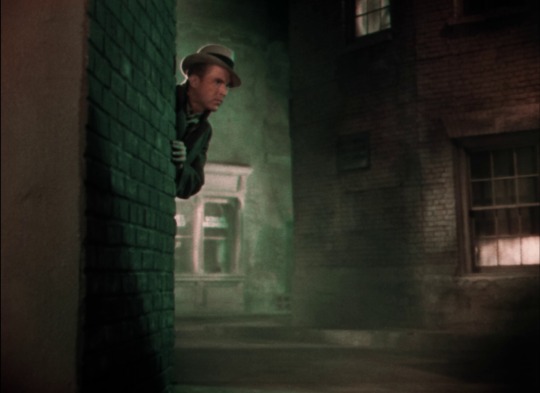

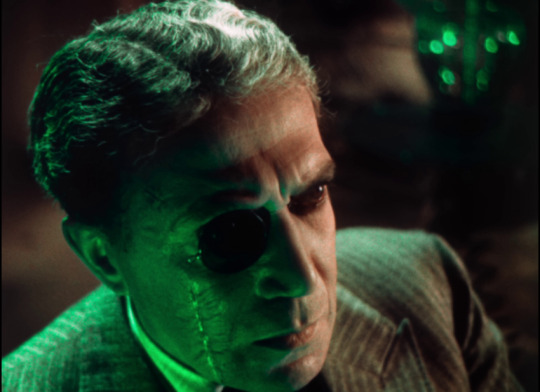
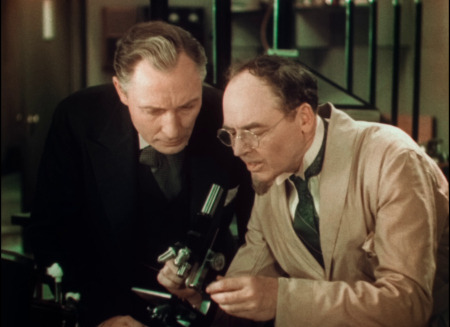
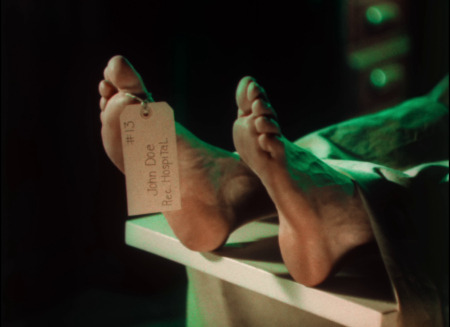


Doctor X (1932)
"If you ask me, I think Dr. Xavier is using very unethical methods."
"Necessity has no ethics, sir."
#doctor x#1932#american cinema#pre code film#horror film#michael curtiz#robert tasker#earl baldwin#howard warren comstock#allen c. miller#lionel atwill#fay wray#lee tracy#preston foster#john wray#harry beresford#arthur edmund carewe#leila bennett#robert warwick#george rosener#willard robertson#solid good time pre code horror (and another off the Rocky Horror list; actually this could be the last i had to see?) (also contrary to#the lyrics of Science Fiction/Double Feature‚ at no point does the titular Dr build 'a creature') but yeah anywa#anyway*‚ this was one of a very few films made with a pioneering two tone technicolor process that was quickly abandoned in the face of#public apathy; once considered a lost film‚ that version was found in the 80s and is now happily available in a beautiful restoration and i#gotta say it looks absolutely phenomenal‚ full of deep‚ ominous greens and purples. the plot is some hokum about a string of murders#possibly involving the good Dr (an as always impeccable Atwill‚ at the beginning of his all too brief run as a star) and his rogues gallery#of weirdy scientific associates. it's par for the course for early horror cinema‚ complete with mildly exasperating comic foil hero (but by#far not the worst example of the type) and some rather risqué dialogue that absolutely wouldn't have got past the code a few years on#could have done with more focus on the horror and less on the funny business but so it goes and at least the laboratory stuff looks amazing
18 notes
·
View notes
Text


Rosalind Franklin (UK, London, 1920 - 1958)
Photo 51, showing X-ray diffraction pattern of DNA On 6 May 1952, at King´s College London, Rosalind Franklin photographed her fifty-first X-ray diffraction pattern of deoxyribosenucleic acid, or DNA. Photograph 51, or Photo 51, revealed information about DNA´s three-dimensional structure by displaying the way a beam of X-rays scattered off a pure fiber of DNA. Franklin took Photo 51 after scientists confirmed that DNA contained genes.
The X-ray crystallographer and biophysicist provided much of the experimental evidence for the structure of DNA, in the form of Photo 51 (below), before switching her focus to viruses at Birkbeck College. She died of cancer at the age of 38.
https://www.sciencefocus.com/the-human-body/understanding-dna-five-key-scientists-who-unravelled-the-helix
https://www.royalmint.com/stories/collect/a-crucial-contribution-the-life-of-rosalind-franklin/
https://embryo.asu.edu/pages/photograph-51-rosalind-franklin-1952
13 notes
·
View notes
Text

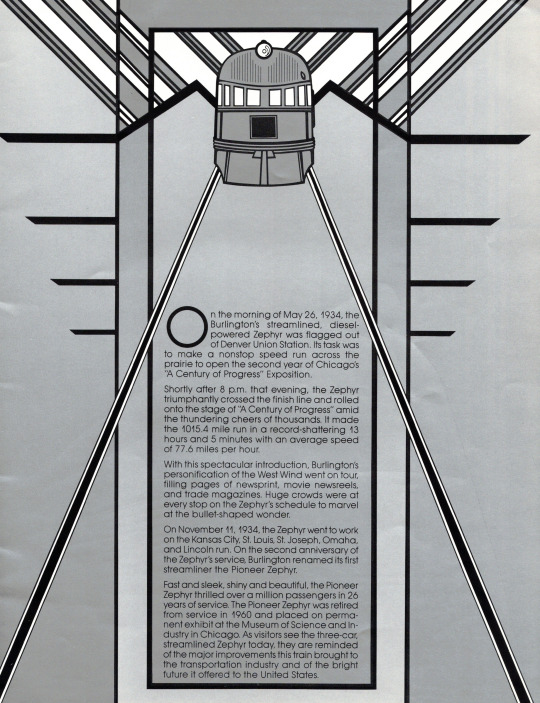

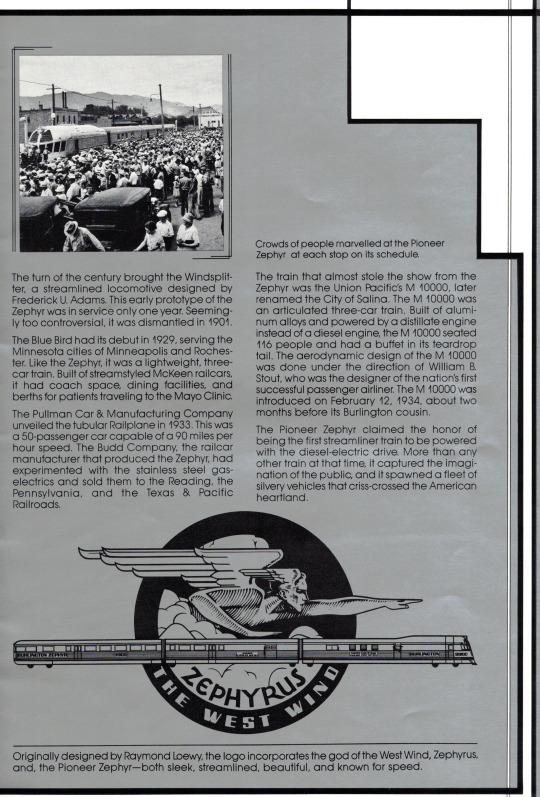
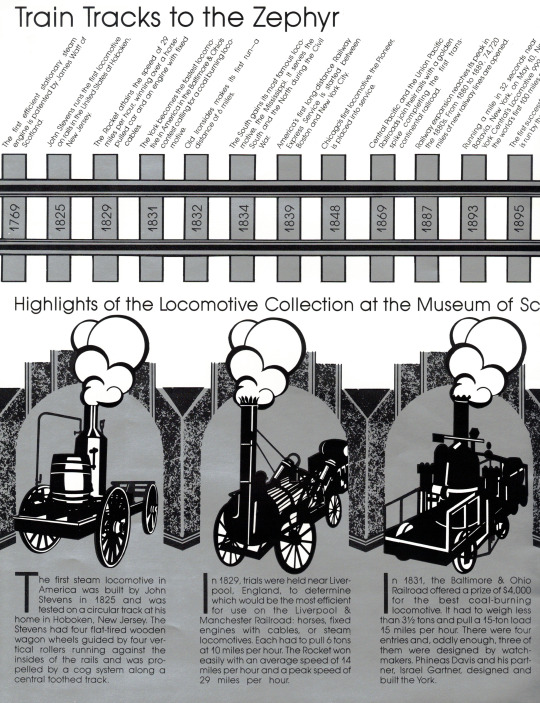
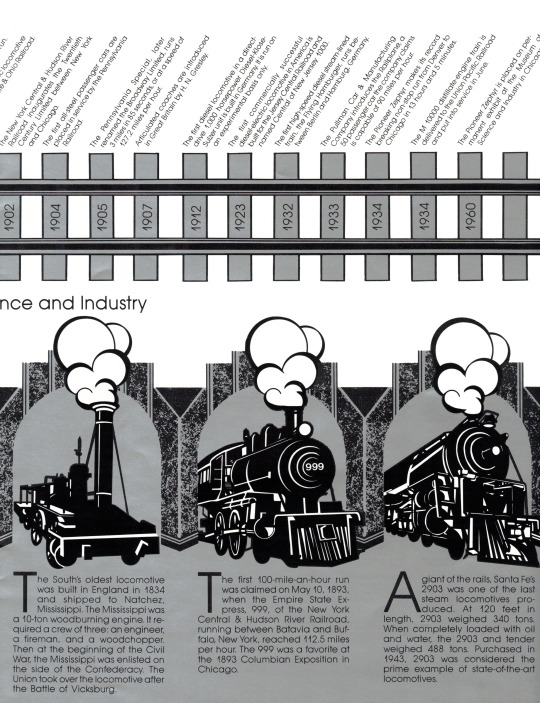
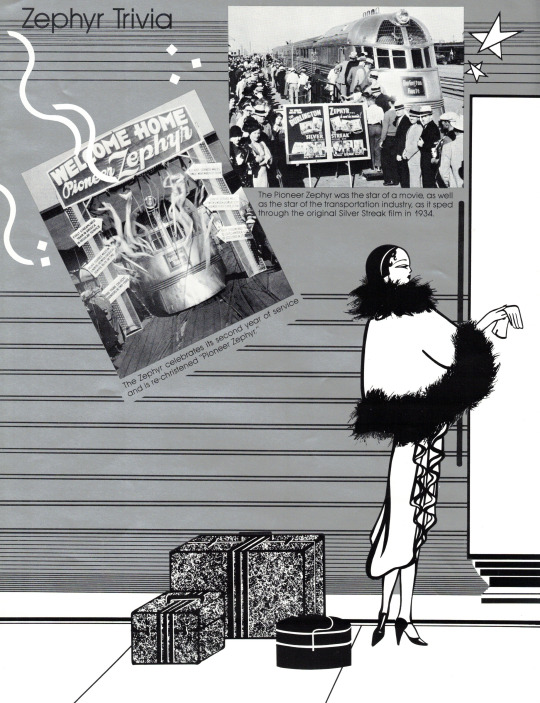
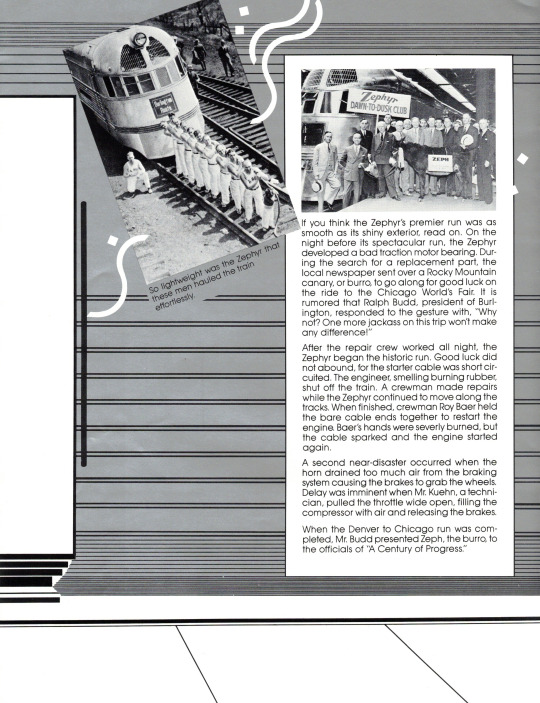





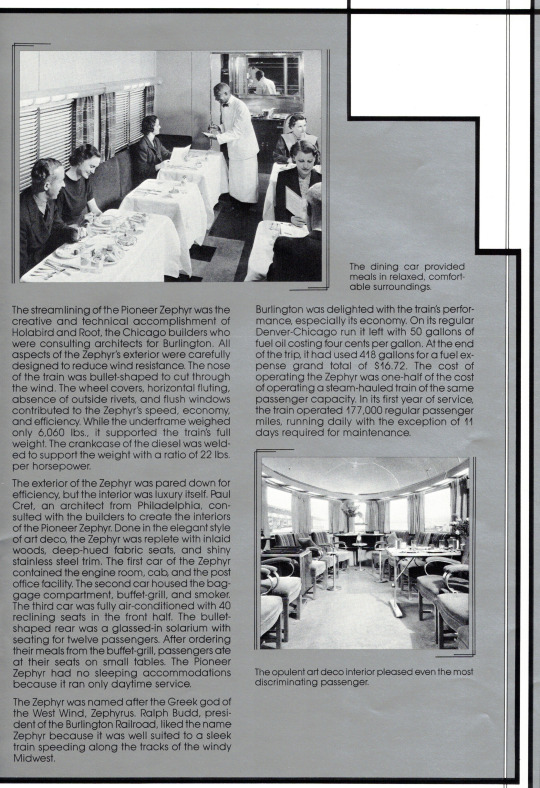
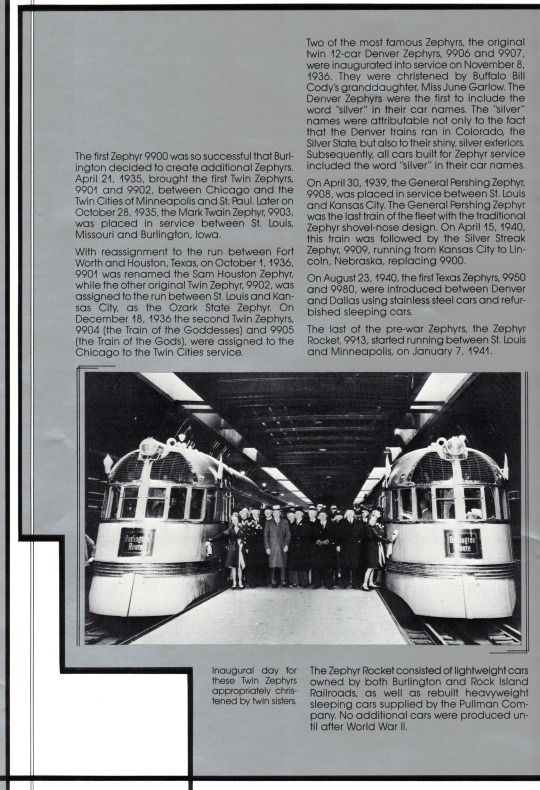

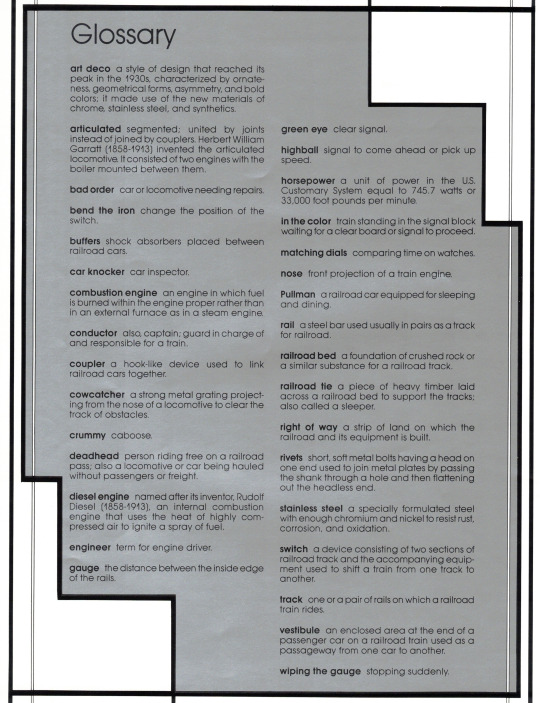
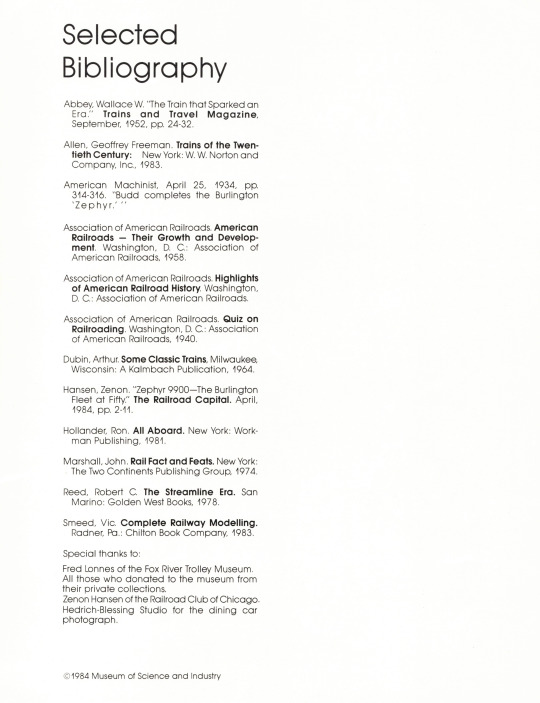

Informational booklet from the Museum of Science and Industry's 1984 50th Anniversary of the Pioneer Zephyr event A Celebration of Railroading.
"The Pioneer Zephyr in Detail" was a four-page centerfold that folded out from the "Zephyr Trivia" pages.
100 notes
·
View notes
Text

Cosmic Frontiers: Robots, Planets & Boundless Adventure!
#futuristic#space#landscape#robots#planets#stars#adventure#cosmic#exploration#boundless#technology#science fiction#imagination#futuristic scenery#space pioneers#robotic companions#interstellar#galaxy#universe#cosmic journey#futuristic technology#alien worlds#vastness#celestial#epic#extraterrestrial#cosmic adventure#stellar#intergalactic#AI
25 notes
·
View notes
Text
I miss her, but the Brick Satellite is where she's meant to be 🥲
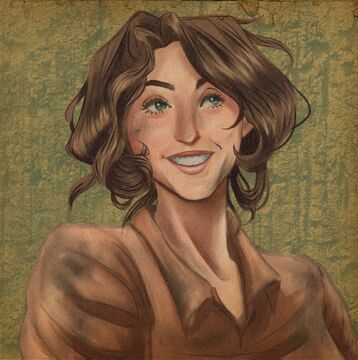
She put on a show! Thank you, thank you, she'll be up there all night! Just follow the Brick Satellite!!!🥲
#pulp musicals#the great moon hoax#the brick satellite#ghost of antikythera#anna hanover#jaime lyn beatty#matt dahan#sci fi#steampunk#retro science fiction#pulp science fiction#satellite#sagitta#township number nine#hanover#hanover city#port of hanover#space travel#pioneer
12 notes
·
View notes
Text
My professor for my Women, Gender, and Science class really likes my research paper idea (looking at Alan L Hart's fiction and non-fiction writing to make a case that his experiences as a trans person likely shaped his interest in public health) and told me she'll be particularly interested to read what I find since he wasn't a figure she was familiar with, so I am feeling very powerful academically today.
#tbh i am excited for the excuse to research one of my favorite historical guys#and can already tell from my preliminary research that i'm going to get uhhhh very emotional reading more of his writing#making it my mission to teach more people about how cool he was#first trans man in the us to get a gender-affirming hyserectomy AND he was a pioneering x-ray researcher & science communicator?#and yet almost no one i mention him to has ever heard of him?#meanwhile the more i learn about him and his work the more i'm like man. if i could get coffee with one (1) historical figure...
47 notes
·
View notes
Text

2 notes
·
View notes
Text
Mars Pioneer Mission: NASA's Secret Adventure in 1972
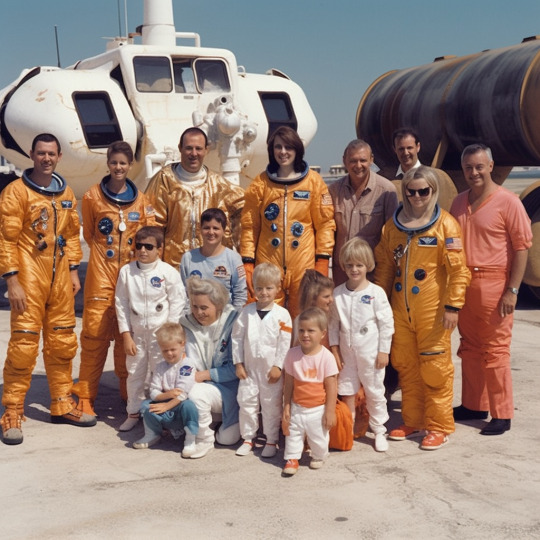
The year was 1972, a time of great space discovery and unprecedented ambition. While the world was fascinated by the Apollo missions that were taking astronauts to the Moon, NASA embarked on a secret mission that would change the course of human history. This is the story of the 'Mars Pioneers Mission', in which a select group of adults and children were sent to the red planet to establish the first human colony. Years later, documents and testimonies revealed the incredible details of this space adventure.
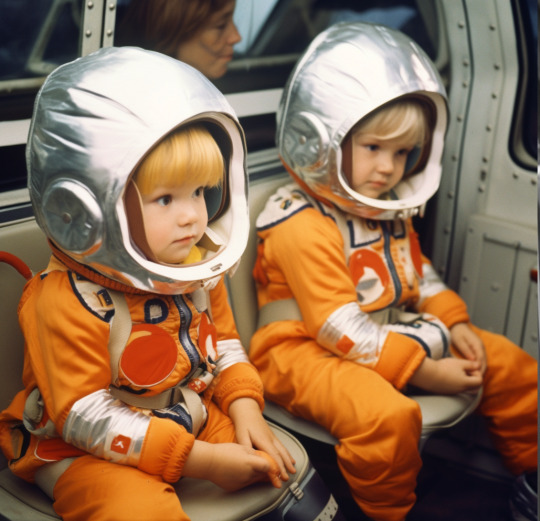

Classified document from 1972:
Among the secret documents discovered after decades, one of the most relevant is the 'Secret Mars Pioneer Mission Report' dated 12 December 1972. This document reveals that NASA organised a human expedition to Mars, with the aim of establishing a permanent colony and preparing the ground for future settlements. The report included details on the selection of crew members, the training process and the resources needed to survive on the Martian surface.
Testimonials from the 1970s:

One of the key witnesses to this secret mission is Dr Robert Thompson, a former NASA scientist directly involved in the preparation and training of the crew. In a 1978 interview, Thompson revealed that the selected group of astronauts consisted of six adults and four children, with unique skills and abilities that made them well suited to the hostile environment of Mars. Thompson emphasised the importance of including children in the mission, as their flexible and adaptable minds would facilitate settlement and long-term exploration.
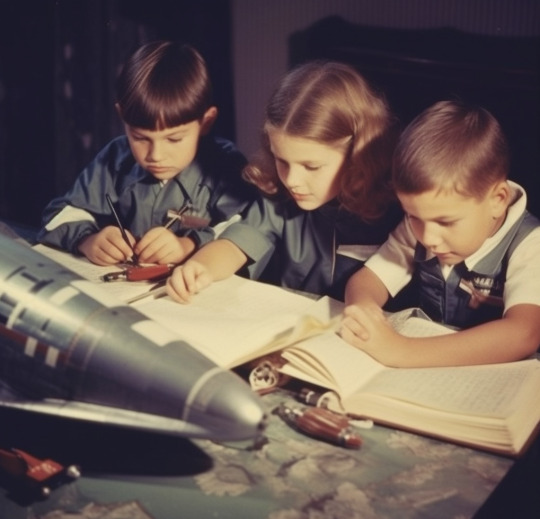
Recent document from 2023:
In 2023, during the reworking of data and testimony, a puzzling document emerged from the hiding place of NASA's archives. It is a letter from Captain Thomas Mitchell, one of the astronauts who participated in the mission. In the letter, addressed to one of his colleagues, Mitchell reveals that the Mars Pioneers' mission was a success. He describes the difficulties of growing certain grains and feeding themselves adequately, the amazing landscapes and the construction of the first basic structures on the surface of Mars.
Current testimonies:
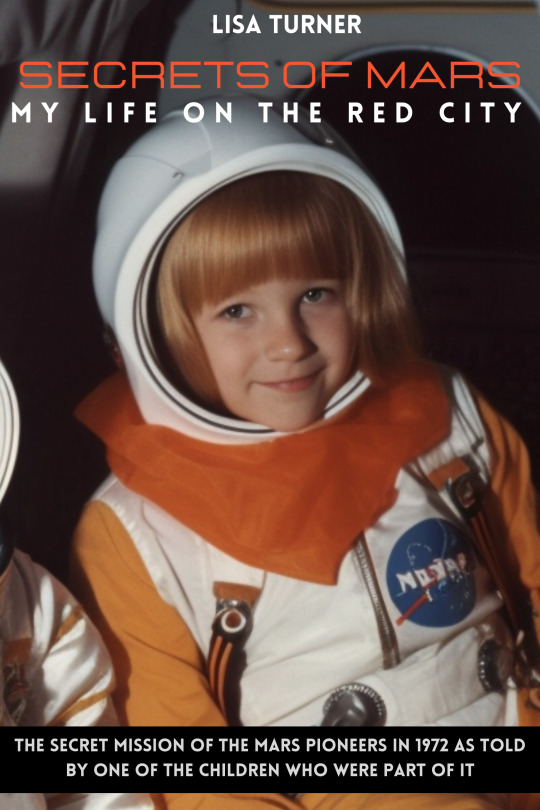
In recent years, some members of the original mission crew have emerged from anonymity to share their experiences. Lisa Turner, one of the children who left for Mars in 1972, has written a book entitled 'Secrets of Mars: My Life on the Red City', revealing details of daily life in the Martian colony. Turner describes how the colonists faced unique challenges, such as managing limited resources, creating a habitable artificial atmosphere and adapting to a completely different environment. His accounts were supported by interviews with crew members and photos and audio recordings recovered from the mission.

In addition, former NASA engineer John Anderson recently provided further details on the Mars Pioneers mission. Anderson shared that the mission was originally conceived as an experiment to assess humanity's ability to survive on other planets. He revealed that the Martian colony continued to exist for several years, with periodic supplies and support arriving from Earth.
NASA declined to officially comment on these testimonies, stating that all information regarding the colonisation of Mars remains highly confidential. However, these recently surfaced testimonies and documents have stirred the public imagination and fuelled speculation about the future of human colonisation of Mars.
The secret mission of the Mars Pioneers in 1972, although never officially confirmed by NASA, remains a fascinating chapter in space history. Uncovered documents and accounts from the 1970s and present day provide an insight.
#Nasa#science#pioneer#Spacepioneer#children#Children in space#Mars#planet mars#mars rover#Mars city#usa
10 notes
·
View notes
Text
The Chinese call it Qi or Chi, the Hindu culture calls it Prana, ancient Egyptians called it Ka, Reich called it Orgone; today we know it scientifically as:
"Surface tension of electrified water decreases as the positive or negative charge increases"
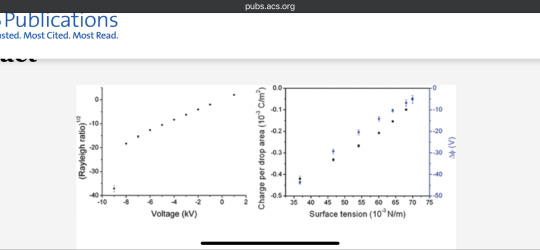
The FDA has blood on their hands. Rather than do science, they do propaganda for monopolist-fascists to preserve the bourgoisie. Why won't the FDA test orally ingested cannabis extract for its potency against cancer? We have seen thousands of studies show that cannabis extract or tincture will cause cancer-apoptosis but the FDA refuses to test it. They are derelict of duty and are killing innocent lives every day. The FDA is a sham and they have blood all over their hands and they cover up facts like how this study basically proves the existence of chi, qi, prana, ka, orgone, and the life-energy discovered independently so many different times by various cultures.
"The real advantage which truth has, consists in this, that when an opinion is true, it may be extinguished once, twice or many times, but in the course of ages there will generally found person to rediscover it, until some of its reappearances falls on a time when from favourable circumstances it escapes persecution until it has made such head as to withstand all subsequent attempts to suppress it.
John Stuart Mill, On Liberty"
#truth#in#medicine#health science#orgone#chi#prana#electricity affects the surface tension of water#facts#the FDA killed a pioneering western scientist#for being correct#RIP Wilhelm Reich#rediscoverer of sacred and forbidden truths#Wilhelm Reich an honorary Pythagorean forever and always#rest in power#he died in a federal penetentiary for discovering truths in the neonazi infiltrated USA post-paperclip#the science of spirituality#neonazis in the fda don't want the working class to have nice things
5 notes
·
View notes
Text
Computers are very simple you see we take the hearts of dead stars and we flatten them into crystal chips and then we etch tiny pathways using concentrated light into the dead star crystal chips and if we etch the pathways just so we can trick the crystals into doing our thinking for us hope this clears things up.
#another fun note#we have wi-fi/bluetooth thanks to the frequency hopping pioneered by Hedy Lamarr#Yes that Hedy Lamarr#who often said her face was a curse#fuck yeah science#women in science
104K notes
·
View notes
Text

Did you know George Washington Carver created over 300 uses for peanuts? 🥜 From peanut butter to paints, his innovations revolutionized agriculture and sustainability! 🌾
Carver’s brilliance wasn’t limited to peanuts—he developed methods to improve soil health, empowering farmers to grow more with less. 💡 His work transformed the agricultural industry and inspired future generations to think outside the box.
💬 Fun Fact: Carver refused to patent many of his discoveries, believing they were gifts for humanity!
What’s your favorite peanut product? 🥜🍪 Let us know in the comments! ⬇️
1 note
·
View note